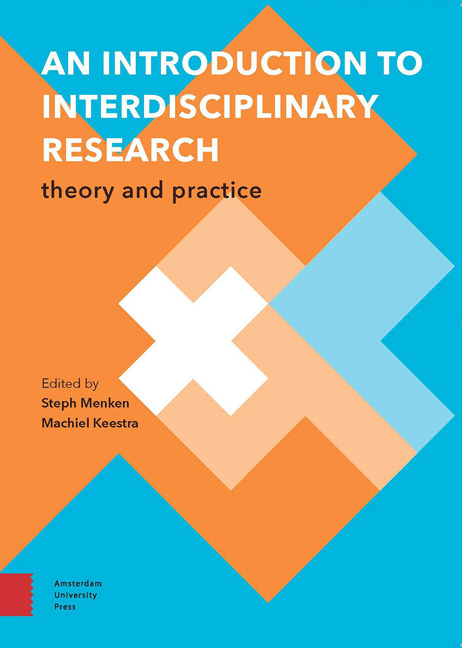Book contents
- Frontmatter
- Contents
- Acknowledgements
- Preface
- Part 1 The Handbook - ‘The What’
- 1 Introduction
- 2 What is Science? A Brief Philosophy of Science
- 3 The Disciplines
- 4 Interdisciplinarity
- 5 Complexity: The Main Driving Force Behind Interdisciplinarity
- 6 Interdisciplinary Integration
- Part 2 The Manual - ‘The How’
- 7 The Interdisciplinary Research Process
- 8 The Problem
- 9 Theoretical Framework and Research Question
- 10 How to Collect and Analyze your Data
- 11 Discussion and Conclusion(s)
- Part 3 Interdisciplinary Research in Practice
- 12 Interdisciplinary Research Example: Fogponics
- 13 Interdisciplinary Careers
- Further Reading
- References
- Colophon
11 - Discussion and Conclusion(s)
- Frontmatter
- Contents
- Acknowledgements
- Preface
- Part 1 The Handbook - ‘The What’
- 1 Introduction
- 2 What is Science? A Brief Philosophy of Science
- 3 The Disciplines
- 4 Interdisciplinarity
- 5 Complexity: The Main Driving Force Behind Interdisciplinarity
- 6 Interdisciplinary Integration
- Part 2 The Manual - ‘The How’
- 7 The Interdisciplinary Research Process
- 8 The Problem
- 9 Theoretical Framework and Research Question
- 10 How to Collect and Analyze your Data
- 11 Discussion and Conclusion(s)
- Part 3 Interdisciplinary Research in Practice
- 12 Interdisciplinary Research Example: Fogponics
- 13 Interdisciplinary Careers
- Further Reading
- References
- Colophon
Summary
Now that you have analyzed your data, it is time to discuss your results and reach a conclusion. You must first decide which technique to use to integrate your results. Once you have integrated them, your results will either verify or falsify the hypothesis (or hypotheses) you have been testing. To wrap up the story, it is helpful for the reader if you reiterate your research process by retracing and sharing your steps. Note that the order in which the discussion and conclusion(s) are presented in research papers differs from discipline to discipline and from journal to journal. In our model we place the discussion before the conclusion(s) (figure 23).
Considerations:
□ Do the results confirm your hypothesis or expectations from your integrated theoretical framework?
□ Does your interdisciplinary insight (or solution) shed new light on the insights obtained by each discipline separately?
□ Spell out to your readers, who will often be disciplinary scientists – how specific disciplinary insights have been integrated into your interdisciplinary conclusion and, conversely, how this might have an impact on their future disciplinary research.
□ What parts of your interdisciplinary research may be sensitive to criticism, and why?
□ Based on your results, what research question would you want to pose next?
Step 8 Interpret results, discuss research & draw conclusion(s)
In chapter 6 we showed that integration can be conducted at multiple levels or at multiple locations in a complex system or mechanism. During this final step of the research process, it is often a matter of connecting results, rather than adding elements or adjusting them, although it is likely that you will end up combining all of them during the analysis (see box 11). Integration of results is usually necessary in the case of optimization problems. Furthermore, integration of results takes place when research leads to practical solutions or products. The conclusions of your research project are likely to raise new questions. Based on those new questions you can give recommendations for future research.
Creating a conceptual model can be a way to visualize and integrate your results (like the example on fisheries in box 4 on p. 47). With such a model, you are able to give an orderly representation of the system or problem you have researched.
- Type
- Chapter
- Information
- An Introduction to Interdisciplinary ResearchTheory and Practice, pp. 96 - 101Publisher: Amsterdam University PressPrint publication year: 2016



